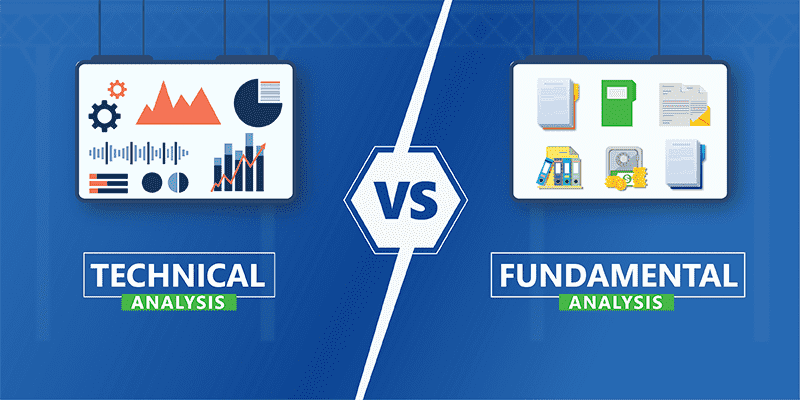Technical analysis can be understood as a form of security analysis that uses price and volume data, which is generally graphically displayed. Technical analysis can be used for securities in any freely traded market around the globe.
Now what do we mean by freely traded market? A freely traded market is one in which willing buyers trade with willing sellers without external intervention. WE get prices as a result of this interaction between buyers and sellers in real time.
Technical analysis is used on a wide range of financial instruments, including equities, bonds, commodity futures, and currency futures.
Important points that must be kept in mind while analyzing any security:
- Technical analysis does not need in-depth knowledge about that particular security. As long as chart represents the action in a freely traded market.
- Technical analysis can be applied over any time frame may it be short term or long-term annual closing prices.
- Trends that are apparent in short-term may also appear over longer time horizon.
Principles
Technical analysis can be thought of as a collective investor psychology. Prices in a freely traded market are set by humans or their robot proxies (such as automated trading programs) and price is set at the equilibrium of supply and demand. Various fundamental (to be explained in detail in next article) theorists have proposed that market are efficient and rational, but technicians believes that humans are often emotional and irrational so that they tend to behave similarly in similar situation.
Although fundamental data are key inputs into the determination of value of security, but as these data are analyzed by humans, who may be driven partially, by factors other than rational factors.
Human behavior is often driven by emotions in various aspects of one’s life, so it is unreasonable to believe that investing is the one exception where humans always behave rationally. Thus, technical analysis is the study of market trends or patterns. And trends and patterns tend to repeat themselves in future and are, somewhat predictable, because people react similar in similar situations.
So, you should rely on recognition of patterns that have occurred in the past in an attempt to project/presume future patterns of security prices.
Another tenet of technical analysis is that the market reflects the collective knowledge and sentiment of many varied participants and the amount of buying and selling activity in a particular security. In a freely traded market, only those market participants who actually buy or sell a security have an impact on price, if you already hold that security that does not contribute to price determination when you actually trades then price movements occurs.
And the greater the volume of a participant’s trades, the more impact that market participant will have on price. Those with the best information and most conviction have more say in setting prices than others because the informed traders trade higher volumes. Technical analysis relies on knowledgeable market participants putting this knowledge to work by trading in the market, thereby influencing prices and volume. Without trading, the information is not captured in the charts. Arguably, although insider trading is illegal for a variety of reasons, it improves the efficiency of technical analysis. Trades determine volume and price. The impact occurs instantaneously and frequently anticipates fundamental developments correctly.
So, by studying market technical data—price and volume trends—the technician is seeking to understand investor sentiment. The technician is benefiting from the wide range of knowledge of market participants and the collective conclusion of market participants about a security. In contrast, the fundamental analyst must wait for the release of financial statements to conduct financial statement analysis, so a time lag occurs between the market’s activities and the analyst’s conclusions.
ASSUMPTIONS
{Reference:CFA INSTITUTE} Charles Dow, creator in 1896 of what is now known as the Dow Jones Industrial Average, described the collective action of participants in the markets as follows: The market reflects all the jobber knows about the condition of the textile trade; all the banker knows about the money market; all that the best-informed president knows of his own business, together with his knowledge of all other businesses; it sees the general condition of transportation in a way that the president of no single railroad can ever see; it is better informed on crops than the farmer or even the Department of Agriculture. In fact, the market reduces to a bloodless verdict all knowledge bearing on finance, both domestic and foreign.
A similar notion was expressed by George A. Akerlof and Robert J. Shiller: To understand how economies work and how we can manage them and prosper, we must pay attention to the thought patterns that animate people’s ideas and feelings, their animal spirits. We will never really understand important economic events unless we confront the fact that their causes are largely mental in nature.
Market participants use many inputs and analytical tools before trading. Fundamental analysis is a key input in determining security prices, but it is not the only one. Technical analysts believe that emotions play a role. Investors with a favorable fundamental view may nonetheless sell a financial instrument for other reasons, including pessimistic investor sentiment, margin calls, and requirements for their capital—for example, to pay for a child’s college tuition. Technicians do not care why market participants are buying or selling, just that they are doing so.
Some financial instruments have an associated income stream that contributes to the security’s intrinsic value. Bonds have regular coupon payments, and equity shares may have underlying cash flows or dividend streams. A fundamental analyst can adjust these cash flows for risk and use standard time value of money techniques to determine a present value. Other assets, such as a bushel of wheat, gallon of crude oil, or ounce of silver, do not have underlying financial statements or an income stream, so valuation models cannot be used to derive their fundamental intrinsic values. For these assets, technical analysis is the only form of analysis possible. So, whereas fundamental analysis is widely used in the analysis of fixed- income and equity securities, technical analysis is widely used in the analysis of commodities, currencies, and futures.
Market participants attempt to anticipate economic developments and enter into trades to profit from them. Technicians believe that security price movements occur before fundamental developments unfold—certainly before they are reported. This belief is reflected in the fact that stock prices are one of the 12 components of the National Bureau of Economic Research’s Index of Leading Economic Indicators. A key tenet of technical analysis is that the equity market moves roughly six months ahead of inflection points in the broad economy.



